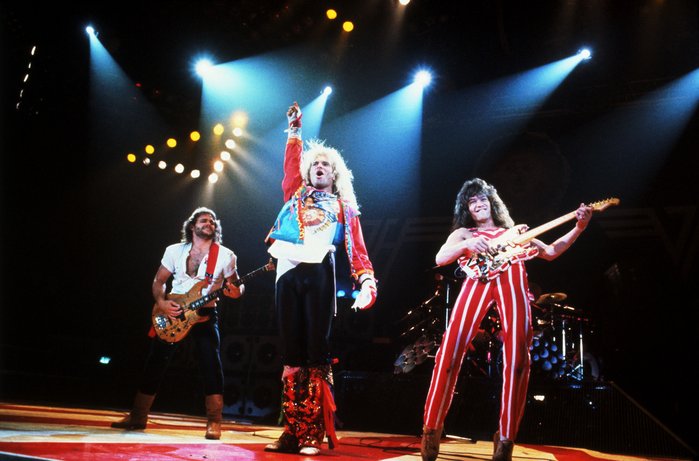By the time Van Halen’s debut album hit the shelves, they’d already become a polished live act, but had struggled through a chequered start that had seen them record a failed demo with KISS’s Gene Simmons at Electric Lady Studios, in New York, and been turned down by virtually every label in the business. But then they met Warner Bros exec Ted Templeman, and everything changed.
Listen to Van Halen’s debut album here.
Templeman, who’d helped produce albums for Montrose, Captain Beefheart and The Doobie Brothers, had worked his way up from producer to Executive Vice President. Since making the shift, he’d distanced himself from taking tips about local talent, but when Marshall Berle, the man responsible for signing The Beach Boys, reached out, Templeman listened.
“You’re not going to believe it”
On 2 February 1977, Templeman headed to The Starwood Lounge in West Hollywood, joining a dozen onlookers that night. As he recounted for Newsday, the low turnout didn’t affect the band’s performance: “Dave [Van Roth, singer] was playing to an audience of ten thousand, when there were about 11 people in there.”
The main draw, however, was the group’s virtuoso guitarist, Eddie Van Halen. Before the band launched into their second set, Templeman was already out the door trying to contact his mixing engineer Donn Landee. “We’ve got to go after these guys,” he told Landee. “You’re not going to fucking believe it when you hear them. This kid guitar player is amazing!”
Templeman would later equate that experience with seeing jazz greats like Miles Davis for the first time. The next night, Templeman returned to the Starwood, this time with Warners president Mo Ostin in tow. Days later, the band signed with the label they’d always wanted to be on, joining their heavy metal heroes Deep Purple and Black Sabbath.
“They were the most prepared band I had ever heard”
With Templeman’s help, Van Halen’s debut album began to take shape: they determined which songs would make the cut, and recorded a new demo. But neither Templeman nor Landee were prepared for how fast the group worked. As Landee later recalled, “We just knocked ’em all down in one afternoon – boom, boom, boom! They were the most prepared band I had ever heard or recorded.”
That August, Van Halen returned to Sunset Sound Studios, in Los Angeles, to harness the raw energy of their live act. As bassist Michael Anthony recalled, the band was more than a little nervous and intimidated by the experience, but it didn’t take long to loosen up, and soon the studio felt like their basement rehearsal space.
“That human vibe’s the thing for Van Halen”
Ensuring that Van Halen’s debut album would capture the band’s raw energy, Templeman and Landee tracked them live. At Eddie’s request, they kept the overdubs to a minimum, ensuring the songs were light and tight as the band recorded live as a power trio, with Roth recording his vocals in a separate booth.
“The album was done on the first or second take exclusively,” Roth later said. “You can get lost in the studio if you’re not careful. With overdubbing, you can get everything musically perfect. But that human vibe, that intangible thing… that’s the thing for Van Halen.”
With the vibe intact, the band laid down additional guitar, as well as what would soon become their trademark three-part harmonies. Twenty-one days and $40,000 later – a fraction of the time and budget for most rock albums of the era – Van Halen’s debut album was complete.
The style and sentiment of hair metal
Straight from the off, opener Runnin’ With The Devil brings the band’s power and showmanship to the fore with Roth’s wild, over-the-top vocals. But Eddie Van Halen’s landmark instrumental, Eruption, almost didn’t make the album. Templeman had overheard Eddie noodling on a break, and championed the piece the guitarist shrugged off as “just something he plays live”. Eventually slotted into second place on Van Halen’s debut album, it was the perfect introduction Eddie’s brilliance.




